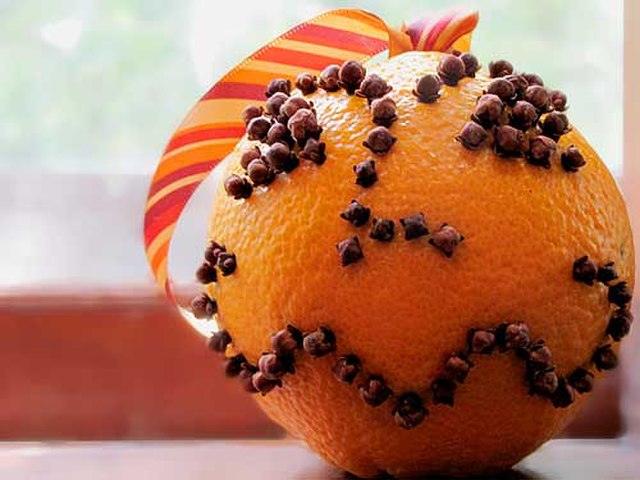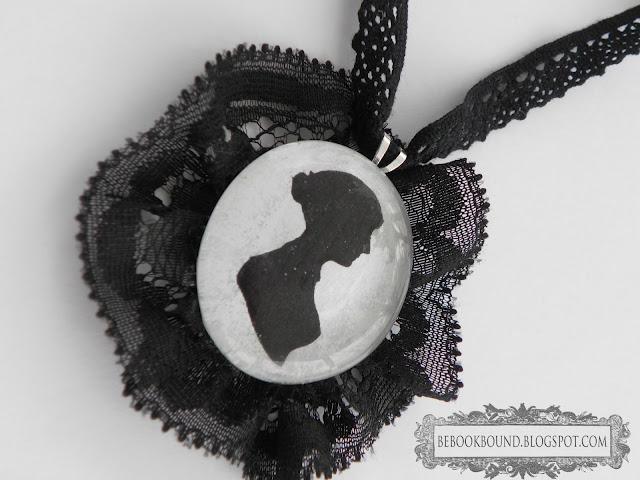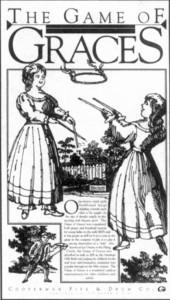
Cloved Orange: A Regency Pomander

The word "pomander" originates from the French "pomme d'ambre." A common interpretation of this phrase is "apple of ambergris," referring to the wax substance used as a base in pomander recipes. Others take the phrase to mean "apple of amber" or "golden apple," as in the fragrant citrus fruits exchanged during holidays for good luck. The pomander became popular during the Middle Ages when the black death and other ailments ran rampant. Sanitation during the era was lamentably lacking. The streets and even some homes were strewn with filth, bodily fluids and the discarded remnants of past meals. People thought that the cause of their problems lay in the resulting stench lingering about the city. The belief went that the pleasant scent of a pomander could repel the disease in the air. Several recipes for pomanders survive from the era. To the base of ambergris, musk, civet, rose water, and other perfumes and spices were added. The mix would then be inserted into the pomander's container. A pomander could be worn around the neck or waist. Many women attached them to their girdle.
Both men and women wore pomanders, most of whom hailed from the elite classes of society. Queen Elizabeth I is frequently depicted wearing one, as are other nobles and notables of the day. People took great pride in their pomanders. Simple pomanders were made of wood, while the most stunning examples were worked in silver or gold, studded with precious stones, and etched with intricate designs. Some pomanders were divided into sections, similar to an orange, into which its wearer would place several different scents. As time wore on, the pomander began to take on the "golden apple" interpretation.
By the 18th century, a pomander was more often than not an orange studded with cloves and other spices. These made for popular gifts during Christmas and New Years. Many people make this type of pomander today in order to scent their homes and clothing.* According to Waverly Fitzgerald's School of the Seasons, "By the 17th and 18th century the decorated orange stuck with cloves was often mentioned as a Christmas or New Year’s custom. In his Christmas masque, Ben Jonson wrote, “He has an Orange and rosemary, but not a clove to stick in it.” A later description of New Year’s in England mentions children carrying pippins and oranges stuck with cloves in order to crave a blessing for their godfathers and godmothers. "
Make A Clove Studded Orange
The following illustration was provided by Stephanie Locsei of http://www.homemade-gifts-made-easy.com/.
To complete this project, you'll need an orange, enough narrow ribbon to wrap twice around your orange and tie in a loop, and a jar of whole cloves.

Pomander history from : Pomanders History | eHow.com http://www.ehow.com/about_5378191_pomanders-history.html#ixzz2EiEHIjWh
If you don't want to miss a beat when it comes to Jane Austen, make sure you are signed up to the Jane Austen newsletter for exclusive updates and discounts from our Online Gift Shop.




Leave a comment
This site is protected by reCAPTCHA and the Google Privacy Policy and Terms of Service apply.